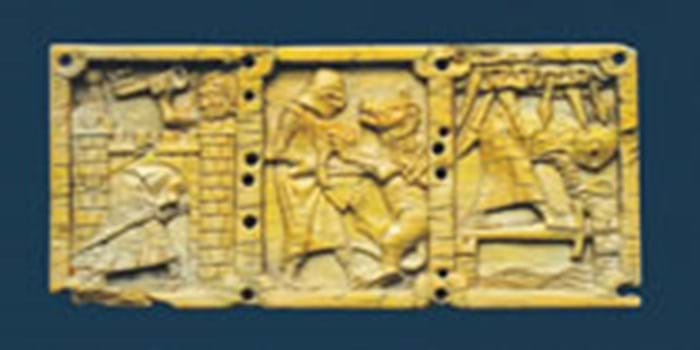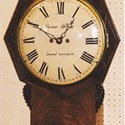Holloway's, Banbury, March 22
Number of lots offered: 416
Lots sold: 70 per cent
Sale total: n/a
Buyer's premium: 15 per cent
Measuring just 2 x 41/2in (5 x 11.3cm), the panel was originally part of a casket from the first half of the 14th century and probably French.
It was carved in low relief in three fields with Arthurian scenes of Sir Galahad receiving the keys of the castle, Sir Gawain slaying the dragon and Sir Lancelot crossing the bridge of swords.
Auctioneer Nick Williams said some experts believed it had lain buried in wet ground at some stage in its long life but the only damage was some wear to the left hand field's frame, which also featured some old repair work.
Not the easiest of items to estimate, Mr Williams went for a £5000-8000 spread and the interested specialists tended to agree - but the panel went to a London dealer at £9800.
The pictures section of the sale had its moments (see Art Market, Page 37) but the reaction to the furniture suggested that talk of a revival may be premature with the trade still in a very selective mood.
As Holloway's furniture specialist James Lees had feared, a set of ten gilded, open-arm salon chairs - eight George III period and two later - were a shade too exotic for the current market.
They were elegant pieces, with shield-shaped backs, acanthus-carved and reeded arms sweeping down to a serpentine seat, raised on leaf-carved fluted tapering legs. They also came with a good provenance from Locko Park, a country house near Derby.
However, as Mr Lees said, they required the right buyer - a gallery owner for instance.
"The chairs were too delicate to be used as dining chairs,' he said adding that this was one occasion where a long set was a handicap. "I think they might do better as pairs," he mused.
A happier result on a piece of Locko Park furniture was the bidding on a 19th century French Louis XV-style gilt gesso salon sofa. It had a carved show frame with acanthus scroll decoration, a low wing back and serpentine seat with four scroll-toe cabriole fore supports and had been later upholstered in pink silk. Perhaps a little showy for some English tastes, it had no problem selling to a Middle-Eastern buyer at £2400.
Other furniture bids included £2000 on a 7ft 81/2in (2.30m) Continental Art Deco library table in walnut and oak with frieze drawers on geometric pillar supports; £1500 on a 6ft (1.83m) wide, 20th century partners' desk in walnut; and £1000 on a William IV burr walnut davenport. All these sold on their low estimates, which appeared to reflect a measure of undue optimism among vendors.
Mr Lees also acknowledged that the £2000-2500 estimate on an early 19th century mahogany drop dial wall clock was about as bullish as it would bear, and indeed he was challenged about it by a dealer who said he had seen them retail at lower sums.
"I asked him how many chiming wall clocks he had seen recently," said Mr Lees, pointing to the rarity of the twin-fusee, five-pillar movement, most such clocks being single fusee.
There was also the plus of a good maker. The dial was marked for George Yonge, Strand, London, whom Baillie records as working between 1776 and 1815 and give his hard-to-achieve recommendation, "fine maker".
All these advantages were enough to see the clock sell to a local private buyer at £2400.
Best of the ceramics was a pair of c.1835 Derby porcelain vases.
The 8in (20cm) high vases of reticulated leaf form with frond handles and floral-encrusted tops doubled the upper estimate when they sold at £500.
Medieval ivory of Arthur’s knights sells for a king’s ransom
IT was a matter of success breeding success for Oxfordshire auctioneers Holloway’s in March. Late last year they sold an 18th century ivory bust, possibly of Handel, for £29,000, and when the owner of a tiny medieval ivory panel read of it in ATG No 1671, January 8, he decided to offer it in the Banbury rooms.








